FROM EDITOR-IN-CHIEF
PHARMACOLOGY, CLINICAL PHARMACOLOGY
Relevance. The selection and modification of drug therapy for patients with plaque psoriasis does not have a specific solution for practicing specialists. Factors have been identified that can worsen the course of the disease when therapies with proven clinical efficacy are used and can even increase the severity and prevalence of the psoriatic process, leading to the development of erythroderma or resistance to the therapy. This article analyzed the actual clinical practice of plaque psoriasis therapy and the influence of concomitant diagnoses on the choice of therapy by physicians among patients who were treated in skin and venereal disease dispensaries in the Central Federal District from 2022 to 2023.
Objective. To conduct a pharmacoepidemiological analysis of drug prescriptions and the volume of their consumption for plaque psoriasis using frequency analysis and analysis of average daily doses at the outpatient and inpatient stages of treatment, followed by a search for patterns.
Materials and methods. An open, non-randomized, cross-sectional prospective study of outpatient records and hospital discharge summaries of 336 patients diagnosed with L40.0 plaque psoriasis was conducted over 2 years. Patients were surveyed by their physicians regarding their adherence to the physician recommendations using a questionnaire on adherence to therapy. The presence of complications of the primary diagnosis, concomitant diagnoses, and factors influencing the prescription of methotrexate and monoclonal antibodies were analyzed.
Results. Patients prescribed methotrexate drugs had significantly more concomitant diseases (p <0.05). In addition to the primary diagnosis, patients treated with methotrexate had significantly less of the following: psoriatic arthritis, polyarthritis, spondyloarthritis, dactylitis, enthesitis, and psoriatic onychodystrophy compared with the group of patients who were prescribed genetically engineered biological drugs (p <0.05). The multivariate analysis revealed the influence of skin lesion severity and patient adherence on therapy choice.
Conclusions. Among patients prescribed genetically engineered drugs, concomitant complications of an arthropathic nature were significantly more common — in 32.5 % of cases, versus 18.2 % in the group of patients on methotrexate (p <0.05). Therefore, the choice in favor of monoclonal antibodies in most cases was due to the presence of arthropathic psoriatic complications, skin lesion severity, younger age, and high adherence to the innovative therapy prescribed by the doctor (p <0.05).
INTERNAL MEDICINE
Relevance. Chronic kidney disease (CKD) develops in the context of many diseases and has a progressive course, with the outcome of chronic renal failure.
Objective. To study the prevalence and severity of CKD in patients of the therapeutic department with hypertension, coronary heart disease (CHD) by type of angina 2-3 FC (NYHA), type 2 diabetes mellitus (T2DM) and their combinations, as well as the real practice of therapy of such patients.
Materials and methods. A total of 193 patients (average age 64.0 ± 18.1 with hypertension, CHD, T2DM, and their combinations were examined and treated in the therapeutic department of the N.A. Semashko City Hospital in the Yaroslavl Region was closed due to deterioration of their condition. The glomerular filtration rate (GFR) was calculated using the CKD-EPI formula. Statistical processing of the results was performed using the Statistica 12.0 program (StatSoft. Inc., USA).
Results. CKD stage 1 was diagnosed in 4.3% of the examined patients, stage 2 in 18.2%, stage 3 in 42.6%, and stage 4 in 2.9%. CKD stages 1 and 2 were significantly more common in patients with isolated hypertension, compared with those examined with hypertension + coronary heart disease + T2DM (p = 0.01, p = 0.03, respectively). CKD stage 3 was diagnosed in 100% of patients with T2DM + coronary heart disease. In patients with stage 3 hypertension and 3 FC CHF (NYHA), obesity, the GFR was significantly lower in men than in patients with stage 1 and 2 hypertension, with 2 FC CHF, no obesity, and women. Correlations of GFR with age and duration of hypertension and T2DM were established. The shortcomings of pharmacotherapy of patients with CKD in the hospital were revealed: no one receives IDPP-4 and gliflozins, some patients with low SCF receive metformin, some do not receive angiotensin-converting enzyme inhibitors, angiotensin II receptor blockers, statins, and some patients with type 2 diabetes did not undergo proper titration of the dose of hypoglycemic drugs.
Conclusions. CKD stages 1–4 were detected in 68% of patients with hypertension, coronary heart disease, and/or type 2 diabetes in the therapeutic hospital, of which 42.6% had stage 3 and 2.9% had stage 4. The GFR value was associated with the degree of hypertension, FC CHF (NYHA), obesity, sex, age, hypertension duration, and type 2 diabetes. In hospitals, recommendations for pharmacotherapy for patients with CKD are not always followed.
UROLOGY AND ANDROLOGY
Relevance. Despite the widespread introduction of organ-preserving operations into urological practice, the number of radical nephrectomies has continued to increase. The results of modern research show that the initial stages of diseases of the remaining kidney are already formed at the earliest possible time after radical nephrectomy; therefore, adequate management of the postoperative period is a key factor in the prevention of diseases of the single kidney. However, this approach should be based on a detailed understanding of the mechanisms of adaptive restructuring of the body, which have a key effect on the morphology and function of a single kidney.
Objective. To study the features of adaptive body reactions and the dynamics of the functional state of a single kidney following radical nephrectomy.
Materials and methods. In the early postoperative period, the clinical and laboratory parameters of 85 patients who underwent radical nephrectomy for renal cell carcinoma in the T2-T3N0M0 stage were studied. The control group comprised 25 patients who underwent similar operations for the same indications within a period of 1.5–12 months. The metabolism of adrenaline, histamine, and serotonin, indicators of psychological and emotional states, vegetative-vascular status, and nitrogen excretion and filtration functions of the remaining kidney were studied.
Results. Radical nephrectomy, as well as the period of conscious expectation, is the cause of a stress syndrome that occurs due to an imbalance of the studied biogenic amines, accompanied by disorders of psychological and emotional health and vegetative-vascular disorders observed at least during the 2 weeks of the postoperative period. In addition, the filtration capacity of a single kidney is impaired, and it persists for 14 days at follow-up. Correlation analysis made it possible to establish reliable links between the imbalance of biogenic amine and anxiety levels and the severity of autonomic vascular disorders, which adversely affect kidney filtration.
Conclusions. The results of this study indicate the need for pharmacological subsidies during the postoperative period of radical nephrectomy, which makes it possible to offset the negative impact of stress syndrome on the outcome of surgical treatment.
Relevance. Participation in military operations involves a large number of human resources, usually young men. In most cases, this leads to post-traumatic stress disorder (PTSD). In the pathogenesis of this condition, great importance is given to changes in the hormonal background, which in turn contribute to changes in the production of sex hormones. However, despite the active discussion on this topic, many unresolved issues.
Objective. To study the effect of PTSD in participants of military operations on the level of free testosterone in the blood serum and the relationship with sexual activity
Materials and methods. The study involved 100 participants who agreed to participate in the survey. All subjects were divided into five groups, depending on the time since participation. The average duration of combat was 6–8 months. The studies were conducted on an outpatient basis. A study of the level of free testosterone level and the assessment of sexual activity were evaluated.
Results. The study revealed a certain discordance between the free testosterone levels in the blood serum of participants in military operations at different times compared with the stress factor received and sexual activity. This phenomenon was manifested by a decrease in sexual activity against the background of an increase in free testosterone in the blood serum. Perhaps this is due to several factors that should be considered in combination. Therefore, the first and main factor may be stress, which affects and activates the sympathoadrenal system, as confirmed in the literature.
Conclusions. In participants of military operations, against the background of an increase in the amount of free testosterone in the blood serum, there is a decrease in sexual activity, which gradually recovers with increasing time elapsed from the moment of stress.
ANESTHESIOLOGY AND RESUSCITATION
Relevance. Postoperative pain management remains poorly understood. Analgesics traditionally used to treat postoperative pain have numerous side effects. The optimal method for preventing postoperative pain is based on the principle of multimodality, where in addition to the use of analgesics with different application points, regional blockades are applied. In chest wall surgery, blockage of the thoracic nerves (PEC block) and the space of the muscles of the spine straightener (ESP block) under ultrasound control are gaining popularity.
Objective. We compared the analgesic efficiency of PEC block and ESP block in multimodal analgesis without opioids during the postoperative period of reduction mammoplasty.
Materials and methods. Sixty patients were examined with bilateral reduction mammography. Three groups were selected: PEC group of the block (n=20), ESP group of the block (n=20), and control group (n=20). The amount of fentanyl and inhalant anesthetic consumed, postoperative pain on Visual Analogue Scale (VAS), side effects of analgesics, and patient activation were evaluated.
Results. Intraoperative fentanyl and inhalant consumption were significantly lower in the block PEC and block ESP groups than in the control group. The post-wake and 1and 3-hour postoperative pain syndrome rates were significantly lower in the block PEC and block ESP groups than in the control group.
Conclusions. ESP-block and PEC-block are effective regional anesthesia methods that provide good intra- and postoperative analgesia. They also have a significant opioid-saving effect. They allow significantly earlier activation of patients. ESPblock slightly surpassed PEC block in duration, but other differences were not.
RADIATION DIAGNOSTICS AND THERAPY
Objective. To test the technique of direct magnetic resonance (MR) cholangiography by introducing an MR contrast agent into the drainages of the common bile duct to determine patency.
Materials and methods. Magnetic resonance imaging (MRI) of the abdominal cavity, performed on a Siemens Amira 1.5T MR tomograph, in 3 patients who underwent surgical treatment of choledocholithiasis with subsequent injection of a contrast agent in the form of 20 ml of a paramagnetic agent (gadodiamide) diluted in 50 ml of saline solution into the common bile duct drainage tubes.
Results. To increase the volume of a traditional MRI contrast agent for subsequent injection into the common bile duct drainage, a bottle of paramagnetic agent (gadodiamide 20 ml) was diluted in 50 ml of saline solution. Subsequent analysis of the images showed no noticeable deterioration in the paramagnetic properties of the diluted gadodiamide. The excellent rheological properties of gadodiamide compared with the contrast agents used for direct X-ray cholangiography did not prevent the passage of the paramagnetic agent into the duodenum. The technique does not require additional equipment or software for MR tomography. The patency of the biliary tract based on the fixation of the paramagnetic nerve introduced into the common bile duct drainage in the duodenum was confirmed by subsequent endoscopic examination. No complications were observed within 10 days after the procedure.
Conclusions. The technique of direct MR cholangiography with the introduction of a paramagnetic solution into the common bile duct drainage can be added to postoperative MRI of the abdomen to determine the patency of the bile ducts.
DENTISTRY
Relevance. The study aimed to compare the depth of anaesthesia, effectiveness, and hemostasis when using two articaine-based drugs: «Articaine-Binergia with epinephrine» 1:200000 and «Ubistesin forte» 1:100000, using a clinical case of the removal of tooth buds 38 and 48 in the lower jaw under conscious sedation in a patient with pronounced dental phobia. Articaine drugs, domestic «Articaine-Binergia with epinephrine» 1:200000 and imported «Ubistesin forte» 1:100000, are approved for use in the Russian Federation. The novelty of this study lies in the application of drugs from the same group of different manufacturers on the same patient under symmetrical clinical conditions by one specialist at the same level of trauma. No such studies were found in the literature.
Objective. The aim of this study was to compare the effectiveness of domestic and imported analogues of local anaesthetics based on articaine in a single patient. The methodological objective is to assess the depth of anaesthesia, effectiveness, and hemostasis, as well as the patient’s subjective sensations and level of dental anxiety.
Materials and methods. A review of the clinical case allows for the assessment of patients' subjective sensations during sedation with preserved consciousness against the background of taking sedative drugs and central analgesics using the «painno pain» scale. The level of dental anxiety was also determined using the Corah's Dental Anxiety Scale. Sedative drugs were used at doses that did not provide complete anaesthesia in the surgical intervention area, allowing the patient to clearly respond to pain stimuli during local, particularly conductive anaesthesia.
Results. Under conditions of intravenous sedation with preserved consciousness, pain sensations are mitigated when local anaesthesia is ineffective, thereby reducing the patient’s psychological discomfort. The use of «Articaine-Binergia with epinephrine» 1:200000 and «Ubistesin forte» 1:100000 allowed for an objective comparison of their effectiveness and safety.
Conclusions. Stable hemodynamic indicators on the monitors indicate high-quality anaesthesia and the absence of pain sensations; otherwise, the indicators on the monitor would have fluctuated. The data obtained confirm that both articaine-based drugs have similar effectiveness and provide an adequate level of anaesthesia in clinical intervention conditions, reducing the patient's anxiety and discomfort. One clinical case is not definitive; therefore, further research with a larger amount of statistical data is required.
MANAGEMENT AND ECONOMICS OF PHARMACY
Relevance. Pharmaceutical workers play an important role in the provision of medicines to the population. The current situation requires an individual approach in providing medical care to patients. Personalized medical care involves the mastery by pharmaceutical specialists of some professionally qualities that contribute to effective provision.
Methodology. The logical, comparative, structural, content analysis, expert assessments, mathematical and statistical were used. The requirements of professional standards were studied, and vacancies on specialized job search sites were investigated.
Results. The professionally important qualities of a pharmaceutical worker that ensure the effective provision of personalized medical care were identified.
Conclusion. Professionally qualities that contribute to the effective provision of personalized medical care will allow pharmaceutical workers to form a commitment to treatment among visitors to pharmacy organizations.
PHARMACY BUSINESS ORGANIZATION
Objective. To analyze the circulation processes of heparin group drugs for 2004–2024 from the point of view of the rates of registration and localization of production of active pharmaceutical substances (APS), finished dosage forms, and prospects for implementing a full production cycle in Russia.
Materials and methods. An analysis of information from 693 registry entries in the State Register of Medicines dedicated to heparin-based drugs was conducted, and a database was compiled in Microsoft Excel. Information on registered drugs was classified according to their belonging to the heparin group, the name of the APS, dosage form, date of registration, presence in the list of vital and essential drugs, country of manufacture of the APS, and finished dosage forms.
Results. In accordance with the anatomical-therapeutic-chemical classification, more than 20 names of drugs were classified as heparin group drugs: unfractionated heparin, low-molecular-weight heparin, heparinoid, and antithrombin III. 95 current registration certificates (hereinafter referred to as RC) and 13 RC excluded from the State Register of Medicines were studied — a total of 108 RC. Graphs were constructed to reflect the rate of drug registration in each named group. The highest rates of registration are observed in the period from 2020 to 2024 — on average 5.25 drugs are approved per year. The years with the most active registration were 2011 (11 approved drugs), 2017 (8 approved drugs), and 2023 (9 approved drugs). The production localization of heparin drugs for 2024 is presented in the diagrams. The main country producing APS for heparin drugs is China. However, for every fifth heparin drug, the full production cycle can be performed in Russia, including the synthesis of APS.
Conclusions. Information was received on the structure of the product range (95 drugs are presented in 10 dosage forms for 5 different routes of administration), rate of registration of drugs in the heparin group, and localization of production of the APS, finished dosage form. The production of APS for sodium heparin is concentrated in China. Information is known about the construction in the coming years in Russia of three production sites for the production of the APS of sodium heparin: by the Chinese company “Hebei Changshan Biochemical Pharmaceutical”, the Russian company’s “Pharmasyntez-Kama” and “Severnyj ocean”. At present, only Russian companies are declared to be suppliers of APS is 3 drugs. Heparin drugs are mainly produced in Russia (75.4 % for sodium heparin drugs and 65.1 % for low-molecular-weight heparin).
CLINICAL LABORATORY DIAGNOSIS
Relevance. The determination of reference intervals (RI) in clinical blood analysis for erythrocytes and their specific parameters: mean corpuscular volume (MCV), mean corpuscular hemoglobin (MCH), mean corpuscular hemoglobin concentration (MCHC), and red cell distribution width (RDW), allows us to use these parameters for differential diagnostics of various pathological conditions from variants of norm.
Objective. Calculate the RI for erythrocyte parameters of a complete blood count for patients in a certain age group (18– 45 years) with normal indicators of iron homeostasis. The reference ranges may vary depending on the analytical systems and diagnostic reagents used.
Material and methods. The study included blood samples from 158 healthy volunteers aged 18–45 years, of whom 127 (80.4 %) were women and 31 (19.6 %) were men. The data were obtained from the «KDL-TEST» company database for the period from 01.01.2023 to 01.01.2024. The criteria for inclusion in the study were: age from 18 to 45 years, clinical blood test results, and iron homeostasis within the RI of the «KDL-TEST» laboratory, absence of signs of an inflammatory process based on normal levels of C-reactive protein (CRP). Analyses were performed using a hematological analyzer Mindray BC- 6800 (manufactured by Mindray, China) and an automatic biochemical analyzer model AU-5800 (Beckman Coulter, USA) using IRON reagents (Beckman Coulter, USA) for the photometric colorimetric method and CRP-latex (Beckman Coulter, USA) immunoturbidimetric method.
Results. The studies revealed a decrease in the upper limit of the RI for red blood cells (RBC) and their indices (RBC, HGB, HCT, MCV, MCH, MCHC, RDW-CV) in women compared with the RI of the Russian National Standard (2009), which amounted to 4 % for the number of red blood cells, 5 % for hemoglobin, 2 % for hematocrit, 3.8 % for MCV and 3.5 % for MCH, as well as 4.2 % for MCHC; and a decrease in the upper limit of the RI of erythrocytes and erythrocyte indices (RBC, HGB, HCT, MCV, MCH, MCHC, RDW-CV) in relation to the RI of the Russian National Standard (2009) in men for erythrocytes by 3.9 %, hemoglobin by 4, 6 %, MCV — by 1.9 %, MCH — by 4 %, MCHC — by 5.8 %. No significant differences were found in the values of erythrocytes and their specific parameters, hemoglobin, and hematocrit, between the data of the hematology analyzers Mindray BC-6800 and Sysmex XE series (p >0.05).
Conclusions. A decrease in the RI of clinical blood analysis in women and men for some hemogram parameters (RBC, HGB, HCT, MCV, MCH, MCHC, RDW-CV) in comparison with the RI of clinical blood analysis of the Russian National Standard (2009), which are within the generally accepted statistically acceptable deviations, was found. The use of automated hematology analyzers did not significantly affect the RI of erythrocytes or their specific parameters.
FORENSIC MEDICINE
Relevance. The role of a dentist is not always limited to the diagnosis, prevention, and treatment of various oral diseases. This profession is also of great importance in the medical and forensic fields, especially in the identification of unidentified bodies. This is why forensic dentistry has developed — a science whose contribution is invaluable in investigating crimes and mass disasters with several victims. This work requires the highest qualifications and prompt actions of specially trained experts with extensive experience. Objective. To analyze modern methods of forensic dentistry for identifying human remains, evaluate their effectiveness, and determine promising areas for dental examination development.
Methodology. An analysis of the main methods of forensic dentistry was carried out. A comparative anatomical analysis of the dental system, radiographic methods, and digital technologies were used.
Results. Identification methods include data collection, careful examination, and radiographic and photographic recording of postmortem evidence of tooth condition, imprints on the skin, features of the jaws, lips, and palatine folds of the mucous membrane. These data were compared with antemortem records to determine the race and age of the deceased. A key factor in successful identification is the maintenance of detailed patient records and effective cooperation with law enforcement. The study of the mechanisms of the formation of marks on teeth in cases of violence, traumatic injuries in cases of sexual violence, and characteristic injuries in cases of abuse of minors is critical for the work of a forensic dentist. Knowledge of methods for determining an individual’s age is essential. In addition, understanding the methods of establishing identity and the algorithms for their application in mass incidents while observing ethical principles is a fundamental aspect of the work of a forensic dentist. Examination of bodies for identification is inextricably linked with the observance of human rights, including the investigation of war crimes, which requires a special approach to this procedure.
Conclusions. In modern times, the role of forensic dentistry has continued to increase. This is due to an increase in the number of natural and man-made disasters, military conflicts, and terrorist attacks where mass identification of victims is required. Dental methods enable highly accurate identification of remains even when other methods are ineffective. The development of digital technologies, 3D modeling, and artificial intelligence has opened new opportunities for forensic dentistry, increasing the accuracy and speed of identification. This makes dental examination an indispensable tool in modern forensic medicine and criminal investigations.
NEW DRUGS AND HEALTH TECHNOLOGIES
The chemical stability, low toxicity, and relative simplicity of methods for the synthesis and modification of gold nanoparticles open up wide possibilities for their use as theranostic agents for the diagnosis and treatment of cancer. The unique properties of gold nanoparticles, known as localized surface plasmon resonance, make it possible to create theranostic agents based on these nanoparticles, combining the capabilities of both in vitro diagnostics and targeted drug delivery. The high surface-area-to-volume ratio of gold nanoparticles significantly facilitates the creation of complex nanoplatforms, which can be used in several therapeutic and diagnostic areas at once.
Адрес редакции и издательства:
ООО «Издательство ОКИ»
115522, Москва, Москворечье ул., 4-5-129
Генеральный директор Афанасьева Елена Владимировна
Тел. + 7 (916) 986-04-65; Email: eva88@list.ru



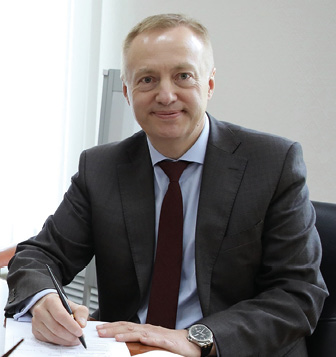

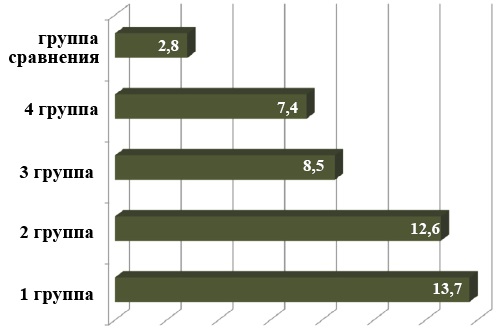
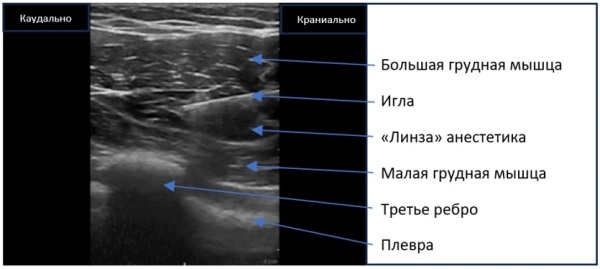
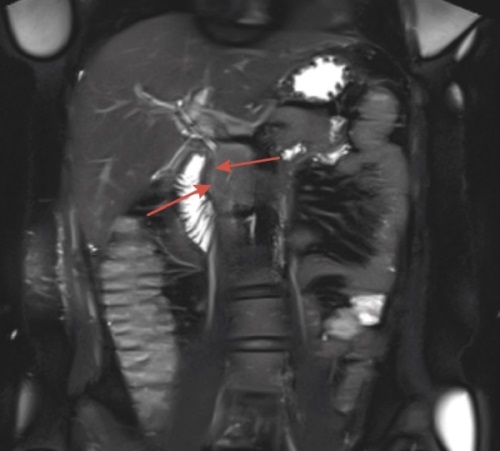
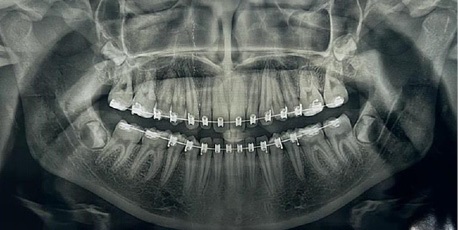
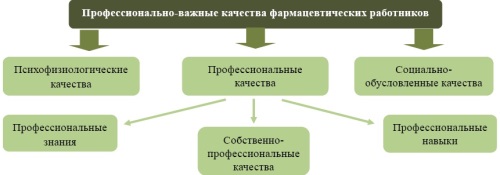
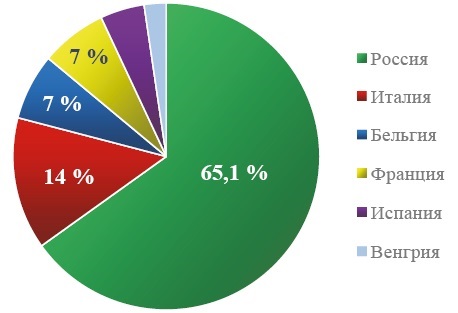
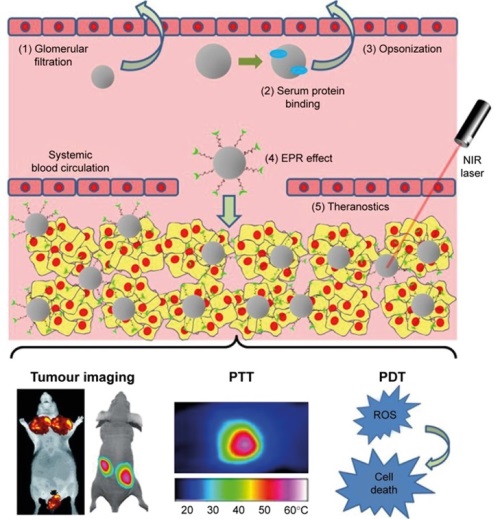





























.png)
